articles
Understanding Modi’s Sanskrit Epithets-I
Published
9 years agoon
By
ihar
Author: Dr. Jayakumar Srinivasan
Press Release: indiafacts.org/understanding-modis-sanskrit-epithets-i/
Have you noticed that Modi’s speeches are sprinkled with many phrases that are not in Hindi, like “Ahimsa Paramo DharmaH”? Most of these are in “Samskritam”, or “Sanskrit” in Anglicized form. What do these quotes mean?
During my years working in the USA, I could not but notice the pride children had in their country, and the amount of knowledge they had about their country’s past. Later, I had the opportunity to study the curriculum taught in the schools. The connection became very apparent.
Every child was taught about the sacrifices made by its “founding fathers” beginning with Christopher Columbus’ voyages and Discovery of the New World. Likewise the sacrifices and leadership of the presidents such as Thomas Jefferson’s writing of the Declaration of Independence, George Washington as the Commander of the Armed forces during the Revolutionary War and as the first President of the United States, Abraham Lincoln’s leadership in the abolishment of slavery are the primary lessons in schools. The enshrinement of Liberty as a fundamental value of America and the founding of one of the greatest nations in the world is etched in the minds of children.

The US Currency Bill
The founders were proud Christians and the country was made possible by the blessings of (Christian) God. USA is a secular country built on Christian Principles[1]. Hence the motto “In God we Trust” in every Dollar currency note, referring to their devotion to their Christian God.
The curriculum in High Schools includes a section on world religions with a healthy dose of Christianity. The end result – every child grows up a patriotic citizen with a healthy sense of self-identity and rootedness.
It was the seventies, when I schooled in India. By the time I was ready to go to college, I had come to learn that the British taught us how to speak, the Greek taught us reason and philosophy, and from Arabia and Islam came mathematics and architecture.
I was not taught that the country had a hoary past going back several thousand years, I had not heard the word Upanishad and its metaphysics that scientists haven’t been able to refute. Not much was said about the great sacrifices made by icons like Subhash Chandra Bose and Veer Savarkar. There was little or no mention of Kittur Chinnamma, Veerapandiya Kattabomman and Subrahmanya Bharati. Countless monuments such as the famous UN Heritage site Brihadeeshwara temple in Thanjavur remain unexplored or even unknown. I had no idea that our Urukku steel became popular in Europe as Wootz Steel used in the Damascus sword, or metallurgical wonders like smelting of Zinc or copper prevalent in India. I wasn’t taught that the Indian share of the World economy plummeted from 24% in 1750 to 1.7% in 1900 as a result of systematic plunder by the British. Instead, I was made to believe that it was the British, who taught us language and civilization, and made the country of “India” for people, who were otherwise backward and disorganized.
Net result: I learned the British view of a concocted India, rather than an organic view of India’s traditions. Today, while there are encouraging signs of hunger in the minds of young Indians, the situation has not changed significantly. Hence, it is reasonable to assume that many Indians may find Modi’s “Sanskrit” quotes to sound like “Greek and Latin”. The purpose of this article is to unfold the meaning of those quotes. In order to achieve this end, some background education is necessary.
Sanskrit:
The word “Sanskrit” is the Anglicized form of the word “samskrtam” (संस्कृतम्). The etymological definition of the word is “samyak kriyate सम्यक् क्रियते” or “(that which is) well done”’. This is further interpreted as “a language which developed organically with the ability to express the subtlest of concepts (of the Dharma worldview) very well”. This language is also called “devabhaaShaa देवभाषा” or “the language of the Gods”.
A 1650 copy of the “Peacock and Snake” problem of Bhaskara II’s Lilavati written circa 1200. (Picture Credit: Mathematical Association of America)
The itihaasaas Ramayana and Mahabharata, the Vedas, which includes the Upanishads, the puraanaas like Bhaagavatam and Maarkandeya, the elaborate commentaries on the Upanishads, commentaries on those commentaries, Arthashastra, treatises on sciences like Ayurveda, Yoga, Mathematics, and Jyotisham (astronomy), to name a few, are all written in Sanskrit. In short, anything of significance to India’s past is in the language of Sanskrit. Forget Sanskrit and be a flotsam in India.
Upanishad:
The Upanishads (उपनिषद्) contain the conclusive tenets of the Vedas, the primary source text of the Hindus. Since they generally occur at the end of the Vedas, the Upanishads are also referred to as Vedanta.
The Vedas talk about human aspirations and categorizes them into Artha – the pursuit of security, Kama – pursuit of pleasures, Dharma – aligning our pursuits to common sense ethics and religious principles with a deep sense of self-responsibility, and finally Moksha, or Liberation. The Upanishads primarily deal with the subject matter of Moksha. Different traditions define Moksha differently. Reaching a specific God at a specific location at the end of one’s life is one view of Moksha. A view that is simultaneously most intellectually challenging and seemingly cognizable is that of Advaita, which claims that “You are what you are seeking”, or, “The essential nature of the individual, the nature of Ishwara (the Omniscient), and the nature of the Universe are identical”.
The meaning of the word “Upanishad” is derived as follows:
Upa (उप) – Near, in proximity (for example, the eyeglasses are called upanetram, upa – near, netram – eyes, i.e. that which is near the eyes). Here “Near” refers to “that which is nearest to me”, which is the “Self” itself, referred to the first person singular “I”.
Ni (नि) – in the sense of certainty (nischayaatmakaH, निश्चयात्मकः)
Sad (सद्) – the removal or destruction (of ignorance)
Therefore, Upanishad means “well ascertained removal of (the ignorance) of the Self. I.e. The knowledge of Self. Because the pursuit of the Knowledge of the Self is in the realm of enquiry and devoid of beliefs, this subject has challenged and enamored the greatest thinkers of the world.
PuraaNaas:
PuraaNaas (पुराणः) are accounts that portray the glories of Ishwara[2] (ईश्वरः) and of men of high learning, valor, and righteousness. For example, the account of Harishchandra is dealt with in one of the PuraaNas, wherein he is portrayed as one who will never speak a lie, regardless of circumstances.
In Harishchandra PuraaNa, Harishchandra nonchalantly refuses to cremate his penniless wife’s son without a payment.
His truthfulness forces him to undergo hardship such as having to leave his wife and child. As children, we used to be in awe listening to our grandmother narrate these stories day after day. Such stories in the PuraaNaas set up challenging ideals and values for the individual. The PuraaNaas are eighteen in number, the most famous of which is the Bhaagavata PuraaNa, which portrays the glories of Sri Krishna.
Itihaasa:
Ramayana and Mahabhaarata are the two itihaasaas (इतिहासः) of the Sanaatana Dharma. This worditihaasa is often translated as “mythology”, i.e. a study of myths. And “Mythology” is a glorious word for “fiction”. But, if you look at the etymology, it means: “Iti ha aasa इति ह आस” thus indeed it was, implying the presentation of historical events, not as a historian would, but a poet would. The itihaasaas have been passed on from one generation to another for an unknown number of millennia. It is considered sacred. Indians, therefore, believe that Rama and his brothers existed, as also Krishna, Arjuna and his brothers and the extended family. Ramayana is a poem, the first and the longest poem written by any human being – at only 24,000 verses! Hence, Valmiki is called aadikavi, आदिकविः, or “first poet”, and Ramayana called “mahaakaavyam”, or “first/grand poem”. Ask any Hindu, if Ramayana is a “myth” and they will be shocked, yet they have been conditioned to use the word “mythology”, an erroneous translation of the word itihaasa. Ramayana is a part and parcel of the history of India.
With this background, in the succeeding parts of this narrative, I will explain some seminal phrases that Narendra Modi often quotes, which reveal the vision of India’s sages. Some of these are:
- Ahimsa paramo dharmaH (अहिंसा परमो धर्मः)
- Sarve bhavantu sukhinaH (सर्वे भवन्तु सुखिनः)
- Satyameva Jayate (सत्यमेव जयते)
- Tena Tyaktena BhunjeethaaH (तेन त्यक्तेन भुन्जीथाः)
- Janani janmabhoomishcha svargaadapi gareeyasee (जननी जन्मभूमिश्च स्वर्गादपि गरीयसी)
- Vasudaiva Kutumbakam (वसुधैव कुटुम्बकम्)
- Ekam Sat Viprah Bahudha Vadanti (एकं सत् विप्राः बहुधा वदन्ति)
- Yatra naryastu pujyante, ramante tatra devataaH (यत्र नर्यस्तु पूज्यन्ते, रमन्ते तत्र देवताः)
References:
- While this topic has been debated, what is stated is the mainstream narrative.
- Note that I am not using the word “God”. Being a word in English, the word “God” refers to an entity in Christianity that isn’t the same referred to by Ishwara in Sanaatana Dharma.
You may like
articles
CARVING CONTINUITIES: THE LIVING HERITAGE OF SOAPSTONE ARTISANS
Published
2 weeks agoon
November 5, 2025By
Suprabho Roy
Soapstone carving is a remarkable craft whose origins stretch back to some of the earliest civilizations in India. Today, this artistic tradition continues among communities whose heritage and skills have been passed down for many generations.
Historical Roots
Soapstone, a metamorphic rock primarily composed of talc, has been used in the Indian subcontinent since the days of the Indus-Saraswati Civilization and the Chalcolithic period. Its historical significance is evident in ancient sites where artifacts such as seals, beads, statues, and small figurines have been found. Key archaeological discoveries, like steatite ringstones from the Shunga-Maurya period and sculptures from the Gupta era, illustrate soapstone’s profound role throughout history. The artistry of temple construction, as seen in Khajuraho, Jabalpur, and Udaipur, is just one facet of the stone’s legacy, with temple artisans employing techniques and tools that are still in use by contemporary soapstone carvers.
Community and Continuity
Carving skills within artisan communities—particularly the Silawat and Vishwakarma—are shared orally and inherited over generations, often spanning four to five generations. Despite the richness of these traditions, written documentation remains scattered and incomplete, making oral testimonies vital in preserving the craft’s continuity. Migration patterns have also contributed to the dispersion and evolution of carving techniques among artisans.
Diversity of Soapstone Craft
The types of sculptures crafted by soapstone artisans are diverse, shaped by regional demands and socio-economic conditions. These range from modern decorative pieces to ritualistic art:
– In Jabalpur (Madhya Pradesh), artisans produce devotional and decorative items such as cookware, toys, and showpieces, with motifs including Shivlings, demigods, elephants, and birds. Soapstone for these works is typically sourced from mines near Bhedaghat.
– The Jhabua-Alirajpur region is known for traditional Gaata sculptures crafted in a relief style, often created in memory of deceased males and worshipped with offerings. Local mines, as well as sources in Gujarat and Rajasthan, supply the necessary soapstone.
– Udaipur’s artisans have adapted to high tourist demand, blending traditional motifs with contemporary designs. Lord Ganesh idols, abstract human figures, and various souvenirs showcase the community’s ability to innovate while maintaining cultural resonance.
Methods and Techniques
Soapstone carving is a collaborative and systematic process :
– Artisans begin with the selection and cutting of raw soapstone using cutters.
– Shaping is performed with hammers and chisels to form the sculpture’s basic structure.
– Fine chisels refine features, while detailing is achieved with pointed tools for intricate patterns.
– Female artisans often smoothen the finished sculptures using sandpaper and water, ensuring a flawless texture.
– Final touches, such as polishing and coloring, are applied with waterproof primers, oil-based substances, or spray paints for gloss and durability.
Cultural Significance and Challenges
The living heritage of soapstone carving continues to hold deep cultural value, maintaining links between the artisans of central and western India since the Bronze Age. Knowledge is primarily transmitted orally, but today faces threats from the rise of mechanization and waning interest among younger generations. Seasonal changes in tourism and market access impact sales, though affordable raw material provides some relief.
The Way Forward
There is an urgent need to recognize, support, and safeguard soapstone artisans to preserve this craft for future generations. Without such efforts, a vital aspect of India’s creative and spiritual history risks fading away. By understanding and promoting the work of these artisans, society can ensure the survival of this unique and profound tradition.
articles
CONSTRUCTING GENDER IDENTITIES IN DEATH : RETHINKING MORTUARY ARCHAEOLOGY THROUGH THE EVIDENCE OF SINAULI
Published
3 weeks agoon
October 30, 2025By
Suprabho Roy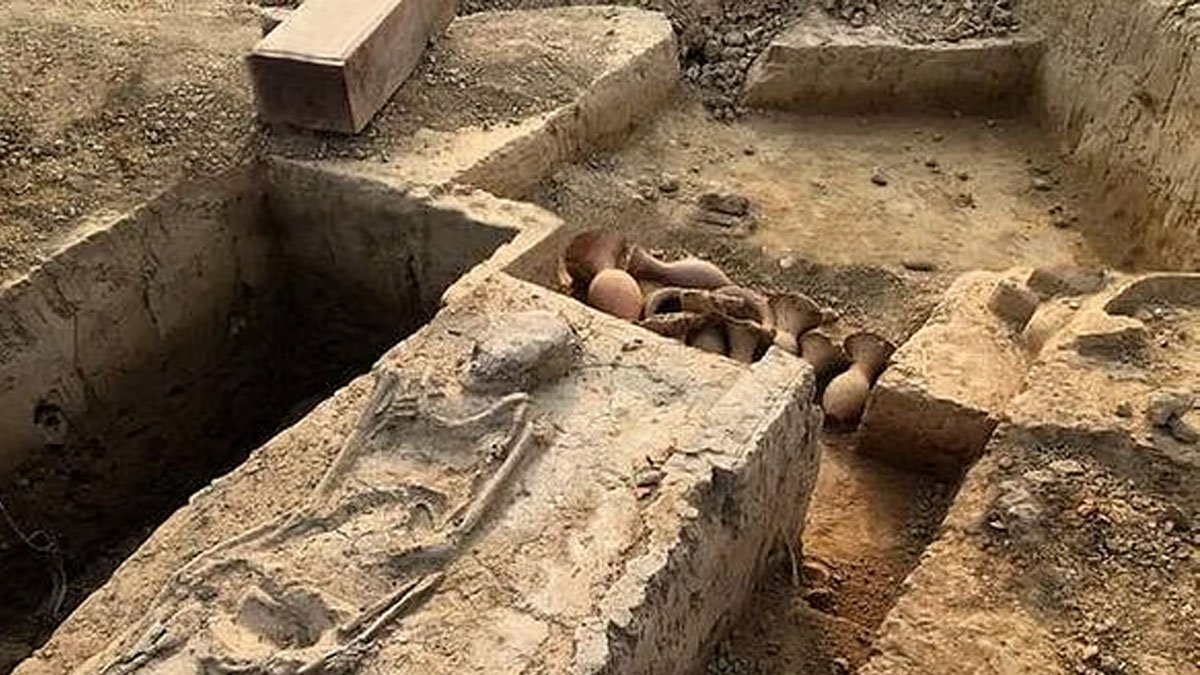
The archaeological site at Sinauli in Uttar Pradesh has provided significant insight into ancient burial practices, gender identities, and social hierarchy in South Asia. The evidence uncovered at Sinauli challenges long-held assumptions and offers fresh perspectives on mortality, gender roles, and elite status in ancient Indian society.
Location and Historical Context
Sinauli is situated in the Baghpat district of western Uttar Pradesh, lying within the fertile Upper Ganga-Yamuna Doab region. It is associated with the Ochre Coloured Pottery (OCP) culture, which dates back to the early second millennium BCE. This site gained attention due to its unique burial practices, especially those involving women and the material assemblages found with their graves.
Overview of Excavations
The Sinauli excavations were initiated in 2005 under archaeologist D.V. Sharma, and further work was conducted in 2018 by Dr. Sanjay Manjul. In 2005, archaeologists uncovered 116 burials, typically oriented north-south, along with ochre-colored pottery. The 2018 excavations revealed even greater complexity, including wooden coffins adorned with copper sheets, rectangular boxes, antenna swords, helmets, shields, pots, and controversial wheeled vehicles—leading to a debate over whether these were chariots or carts.
Types of Burials
Sinauli yielded four primary burial types:
– Symbolic burials without skeletons.
– Primary burials with full skeletons.
– Secondary or fragmented burials.
– Multiple burials containing fragmented remains.
Gender Distinctions in Burial Practices
A significant contribution of Sinauli is its challenge to conventional views on gender and mortuary archaeology. Certain burials, notably those identified by Asko Parpola, show that elite women were sometimes interred in richly decorated coffins with martial symbols such as swords, shields, and wheeled vehicles. Coffins for women featured steatite inlay and were often covered, in contrast to men’s coffins, which generally had copper sheathing and were left uncovered. Such differentiation suggests elaborate symbolism surrounding gender and possibly ritual seclusion or heightened sacredness for women in death.
One highly debated aspect is the absence of feet in Burial-1, which might suggest less earthly mobility or represent a transformation from earthly to transcendent status.
Rethinking Weaponry and Gender
The presence of weapons, such as copper antenna swords and shields, in women’s graves at Sinauli has prompted scholars to reconsider rigid notions of gender roles. These martial objects could signal the dead’s authority—either as warriors or ritual leaders—thus broadening our understanding of gender within ancient funerary contexts. Interestingly, such elaborate martial symbolism is less prevalent in the male burials at Sinauli.
Symbolism of Coffins and Elite Status
Coffins at Sinauli, rare in South Asian archaeology, were more than mere containers; they symbolically transformed the deceased into sacred beings. Their intricate decoration reflects considerable labor, resources, and craftsmanship, indicating elite status and the possibility of gendered authority within the social hierarchy.
Conclusions and Implications
The burial evidence from Sinauli emphasizes material distinctions that reveal social stratification, hierarchy, and constructed gender roles. While the idea of women warriors remains debated, the presence of martial symbols with elite women points towards complex rituals and conceptions of social power in death. Sinauli thus stands out as a crucial site for rethinking gender identities, social class, and the symbolic aspects of funerary practices in ancient India.
articles
Rediscovering Sutanuti: IHAR WB CHAPTER’S Second Heritage Walk
Published
3 weeks agoon
October 29, 2025By
Suprabho Roy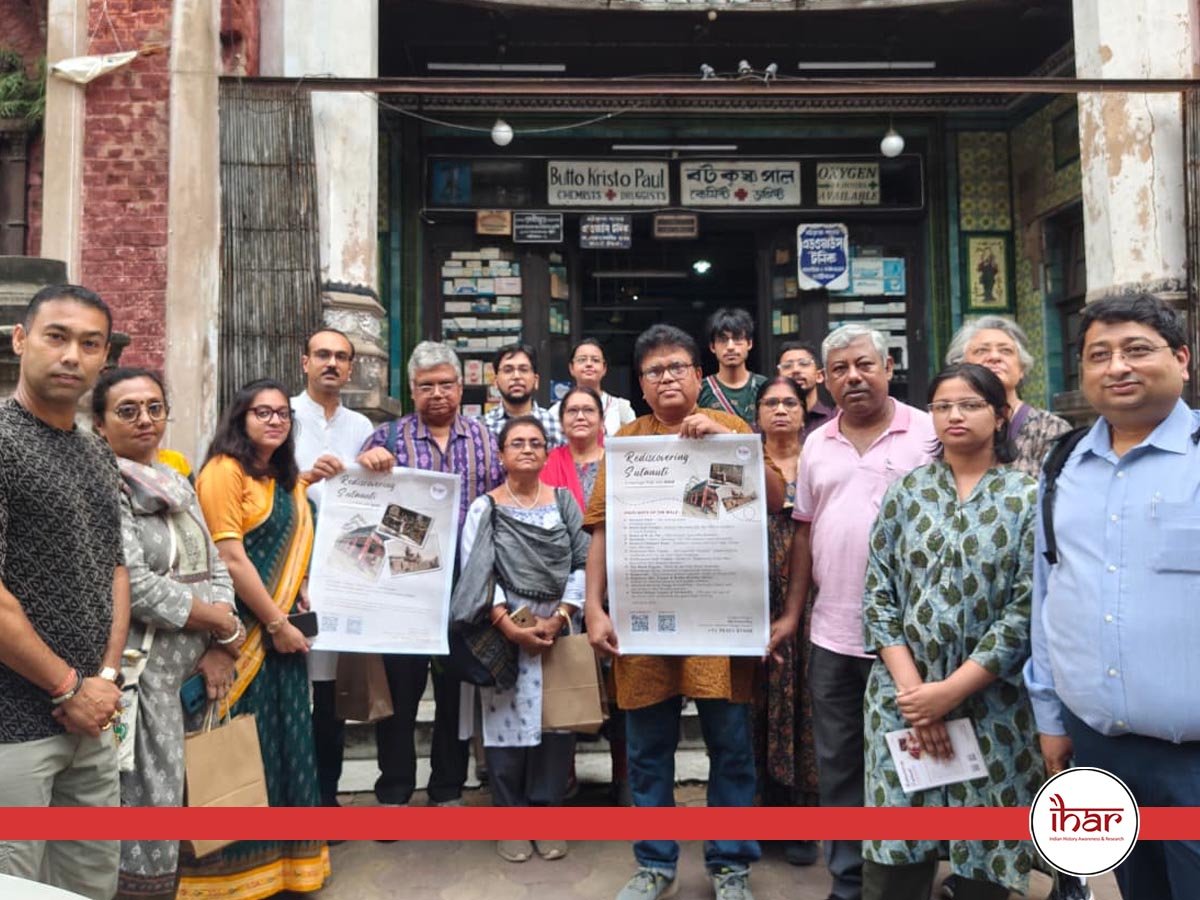
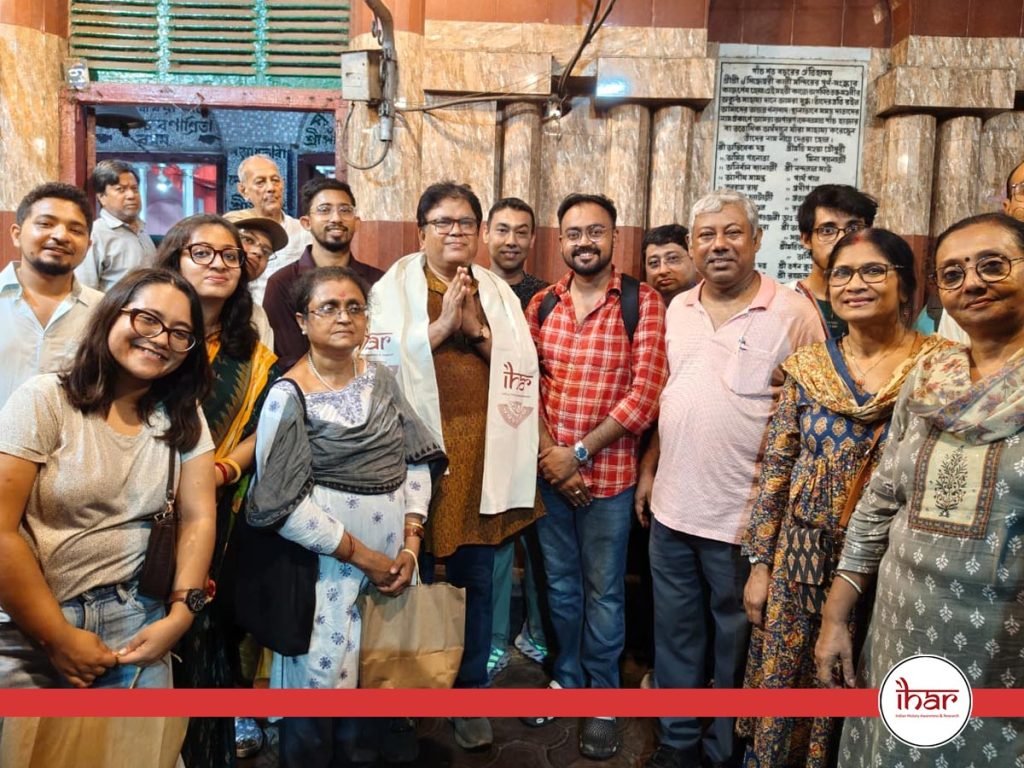
On Sunday, October 26, 2025, the organization Indian History Awareness and Research (IHAR) embarked on its inaugural heritage walk, titled “Rediscovering Sutanuti.”
Dedicated to the study, research, preservation, and public awareness of Indian history, IHAR has long aimed to connect people with the layers of India’s historical and cultural legacy. This heritage walk marked a significant step in that direction.
Why Sutanuti?
The choice of Sutanuti as the focus of IHAR’s first heritage walk was profoundly symbolic.
It was here, on August 24, 1690, that Job Charnock, an officer of the East India Company, is believed to have landed—a moment that would reshape the destiny of Bengal and, indeed, the entire Indian subcontinent.
Although the Company had visited Sutanuti earlier, it was this arrival that initiated a chain of events culminating in nearly two centuries of colonial rule, lasting until August 14, 1947.
On November 10, 1698, the East India Company entered into an agreement with the Sabarna Roy Chowdhury family, acquiring the zamindari (lease rights) of three villages—Kalikata, Govindpur, and Sutanuti—for an annual rent of ₹1300.
This agreement laid the foundation for the rise of Calcutta, though Charnock himself never witnessed it, having passed away in 1693.
Over 335 years later, the Sutanuti of 1690 and that of 2025 appear worlds apart.
Historians still debate the precise locations of Sutanuti Ghat, where Charnock’s ship is believed to have anchored, and Sutanuti Haat, the bustling market once held twice a week for the sale of cotton yarns and threads.
It was this very market that enriched the Seths and Basaks, the early inhabitants of Calcutta, through the textile trade.
Though no physical trace of that port or market survives today, scholars generally agree that Sobhabazar corresponds to the original Sutanuti region.
Accordingly, IHAR chose this locality for its first heritage walk—a symbolic return to the city’s historical roots.
The legacy of Sutanuti lives on in names like Haatkhola (“the open market”), a term derived from the old marketplace and still preserved in local designations such as Haatkhola Post Office.
Similarly, through the efforts of Sutanuti Parishad, the Sobhabazar Metro Station was officially renamed “Sobhabazar Sutanuti.”
Even in the absence of the old market, these surviving names echo the deep emotional and cultural resonance Sutanuti continues to hold for the people of Calcutta and Bengal.
⸻
Highlights of the Walk
The heritage walk took participants on a journey through Sutanuti’s remaining landmarks and forgotten corners, each revealing a fragment of Calcutta’s layered past.
B. K. Pal’s House
The first stop was the residence of B. K. Pal, the pioneering Bengali manufacturer and seller of medicines in the 19th century.
His most celebrated creation, Edward Tonic (1887), became a household remedy for fevers and stomach ailments—common and often fatal in colonial Calcutta—earning him a lasting place in Bengal’s medical history.
Shwet Kali Temple
Participants then visited the Shwet Kali Temple on Sobhabazar Street, nearly 300 years old and among the three oldest white Kali temples in Bengal.
Originally a shrine for dacoits, it later became a site of domestic worship. The deity here is distinctive—white in color, two-armed, tongue inside the mouth, and standing over Virupaksha and Kalbhairav, without the usual garland of severed heads.
Raja Janakinath Ray’s Mansion
The walk next stopped at the grand mansion of Raja Janakinath Ray of the Bhagyakul Ray family, prosperous traders from Dhaka and Calcutta.
Built in the 19th century, a part of this palatial building now serves as the Jorabagan Traffic Guard office, while descendants of the Ray family still occupy another section.
Chitpur Road (Rabindra Sarani)
Participants then walked along Chitpur Road, now Rabindra Sarani, regarded as Calcutta’s oldest road, dating back nearly 500 years.
Originally extending from Chitpur to Kalighat and later to Halisahar, the path once cut through dense forests inhabited by wild animals and robbers—an incredible contrast to today’s bustling thoroughfare.
Rameshwar Shiva Temple
Next came the Rameshwar Shiva Temple, built around 1700 by Nandaram Sen, the first native tax collector under the British official Mr. Sheldon.
Standing 80 feet tall, the temple mirrors the Aatchala style of the Kalighat Kali Temple and houses a six-foot-high Shivalinga.
Kumartuli and the Artisans
The walk then entered Kumartuli, where artisans were crafting Jagaddhatri idols.
Participants met Amit Ranjan Karmakar, a rare collector and restorer of vintage radios, tape recorders, and gramophones—all maintained in working order.
Radhagobinda and Baneshwar Shiva Temples
The Radhagobinda Temple and the Aatchala Baneshwar Shiva Temple, built by Bonomali Sarkar, another British-era official, were the next stops.
While the Radhagobinda Temple remains in fair condition, the Baneshwar Shiva Temple lies in neglect, its once-fine terracotta work fading amid weeds.
Kaviraj Gangaprasad Sen’s House
The group then visited the home of Kaviraj Gangaprasad Sen, the eminent 19th-century Ayurvedic physician who migrated from Bikrampur (Dhaka) in 1840.
Revered for his skill, he once treated Sri Ramakrishna Paramahansa and famously predicted that the saint’s illness was incurable—a prophecy now part of Bengal’s spiritual lore.
Dhakeshwari Temple
The Dhakeshwari Temple in Kumartuli houses a 800–1000-year-old ashtadhatu idol, originally enshrined in Dhaka by King Ballal Sen.
After Partition, the idol was smuggled to Calcutta in 1948 and relocated to its present temple in 1950, where it continues to be worshipped.
Madanmohan Temple
The majestic Madanmohan Temple, established in 1761 by Gokul Chandra Mitra, came next.
Once spread across 56 bighas, the temple houses a black stone deity associated with a legend involving King Chaitanya Singh of Mallabhum.
Its Raas and Annakut festivals are still celebrated annually.
Siddheshwari Mata Temple and the Black Pagoda
The final stop was the Siddheshwari Mata Temple in Baghbazar, believed to be over 500 years old.
Founded by a monk named Kalibor, it later came under the worship of the Chakraborty family and their descendants.
The goddess, affectionately known as “The Ginni Maa of Baghbazar,” was revered even by Girish Ghosh and Sri Ramakrishna, the latter once offering tender coconuts for the recovery of Keshab Chandra Sen.
Across the street stands the Black Pagoda, constructed between 1725 and 1730 by Govinda Ram Mitra, the second native revenue collector after Nandaram Sen.
Standing originally over 165 feet tall, it once surpassed even the Ochterlony Monument (Sahid Minar) in height before being partially destroyed in the cyclone of 1737.
Its surviving fragments still whisper tales of Sutanuti’s lost grandeur.
⸻
A Journey Through Memory
Thus concluded IHAR’s first heritage walk—a journey through the forgotten heart of Sutanuti, where every lane, temple, and crumbling mansion still bears the faint echo of Calcutta’s beginnings.
Though time has erased much of the physical landscape, the spirit of Sutanuti endures—in its names, in its memories, and in the hearts of those determined to rediscover it.
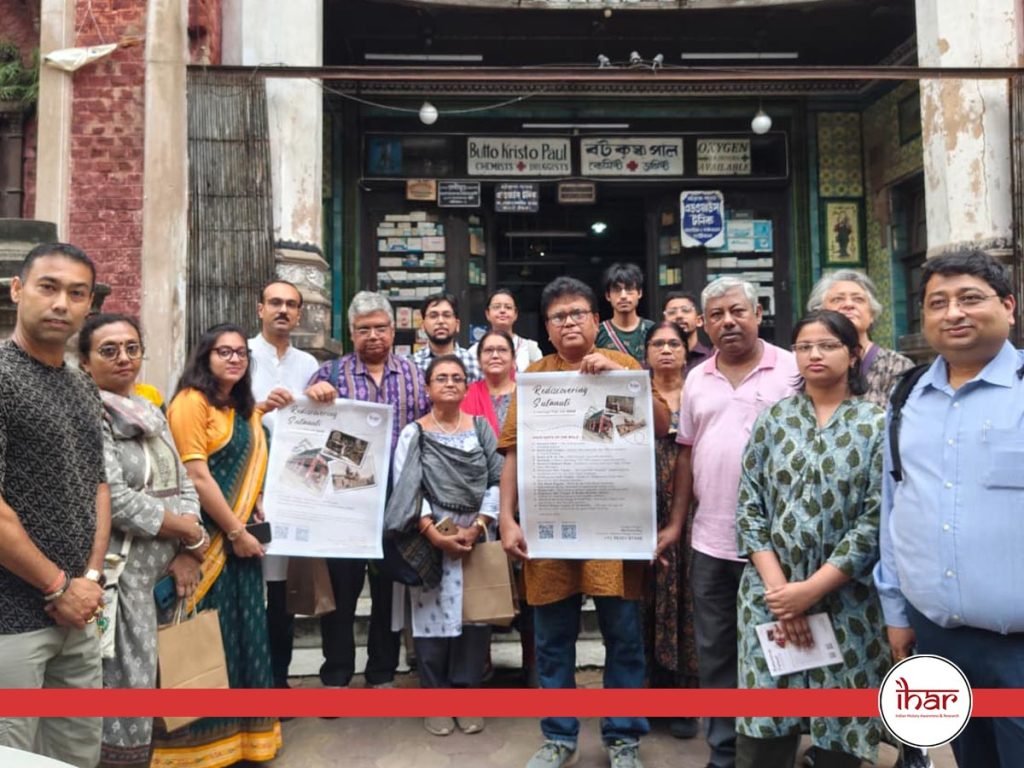
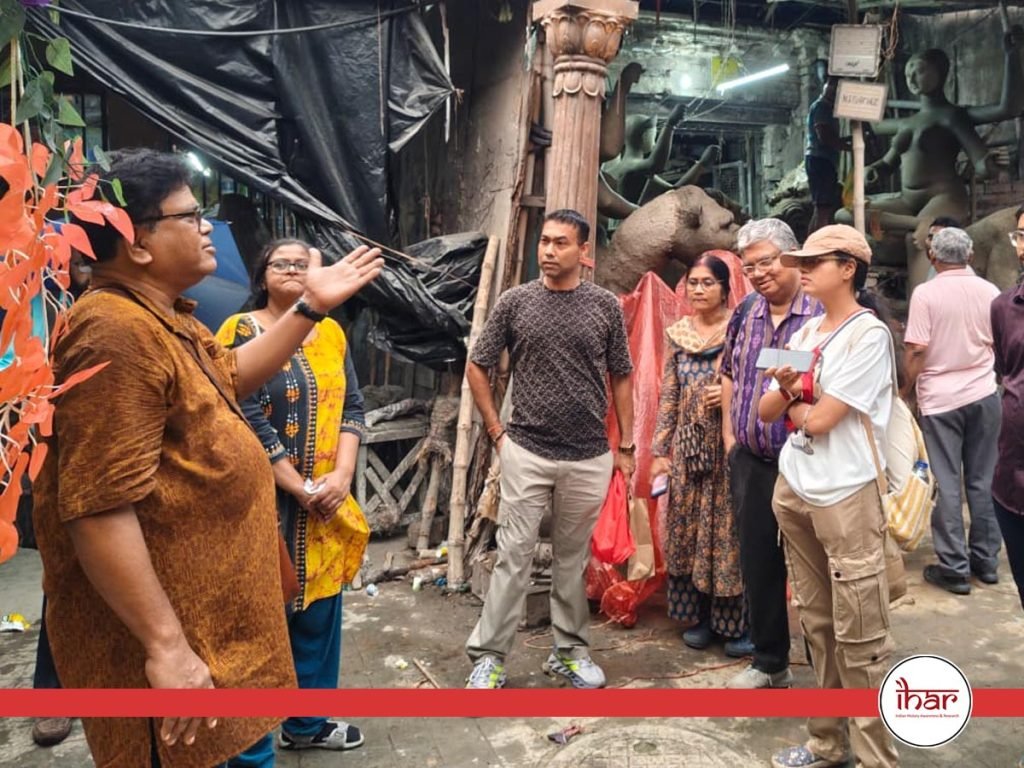
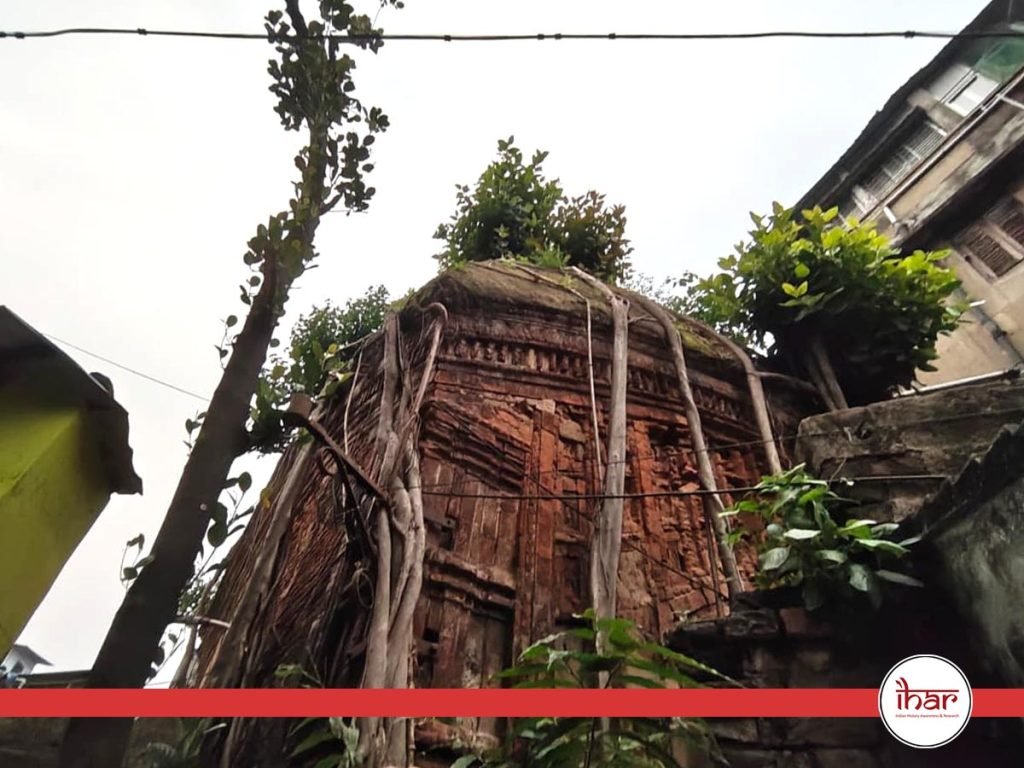
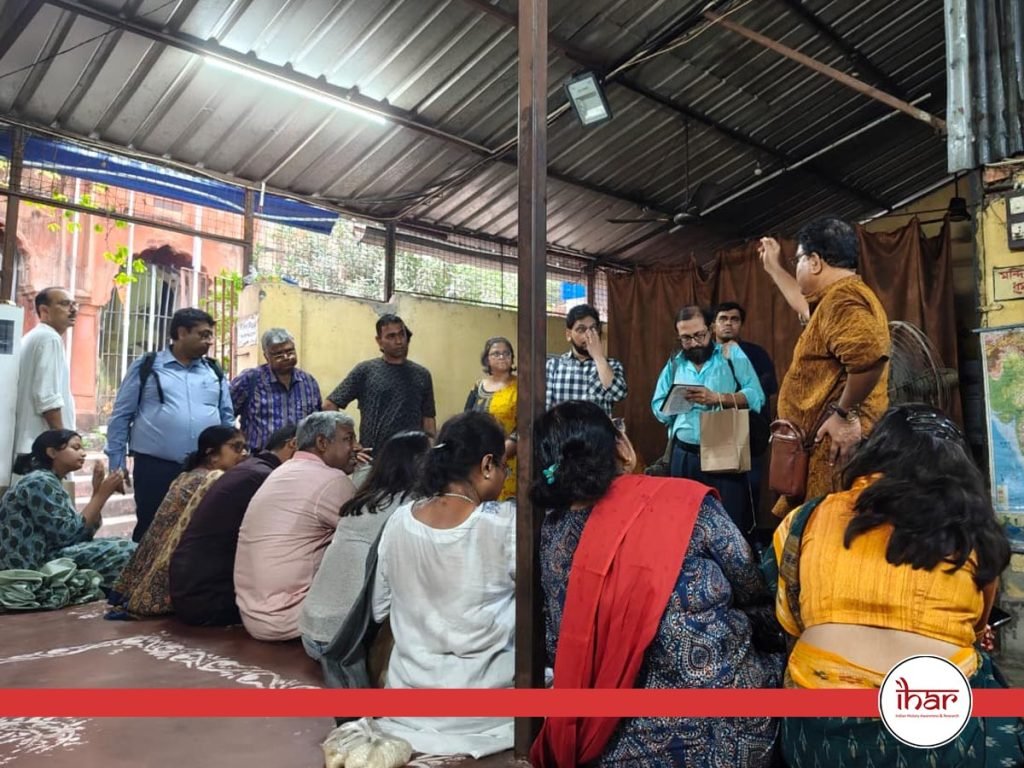

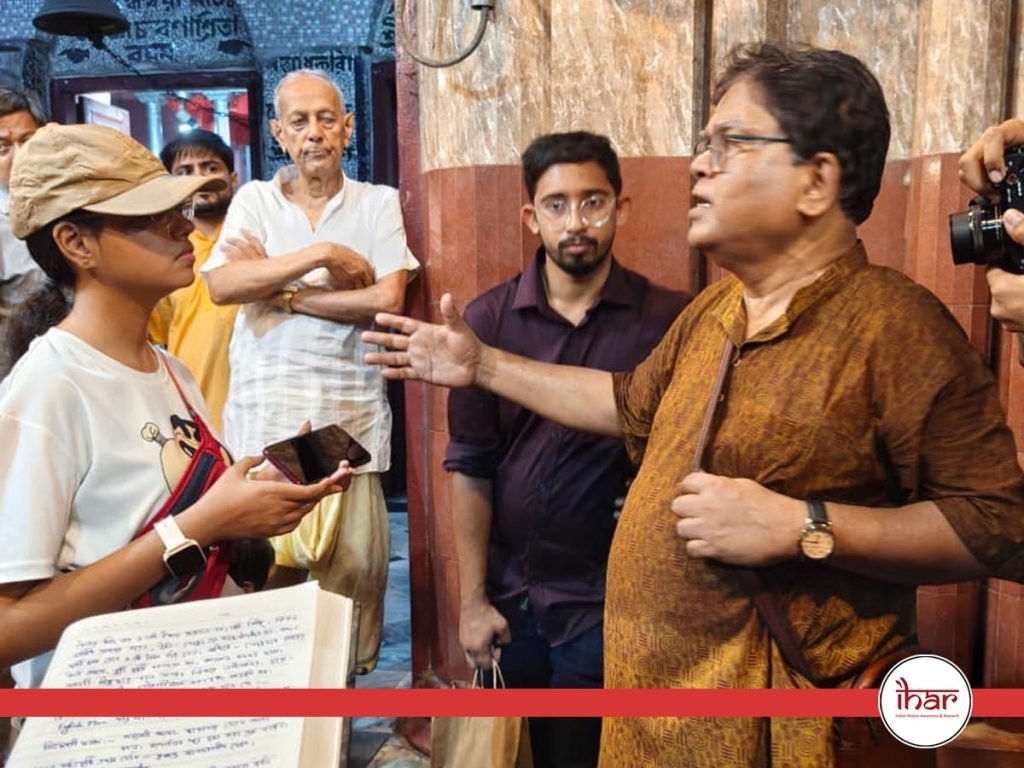
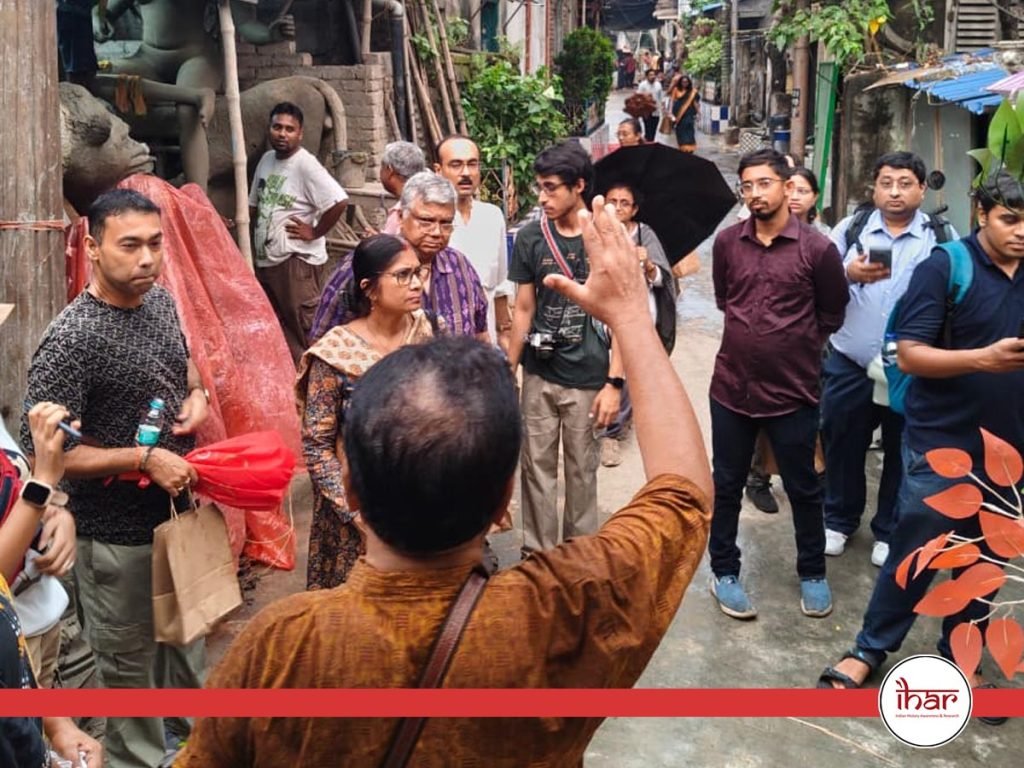
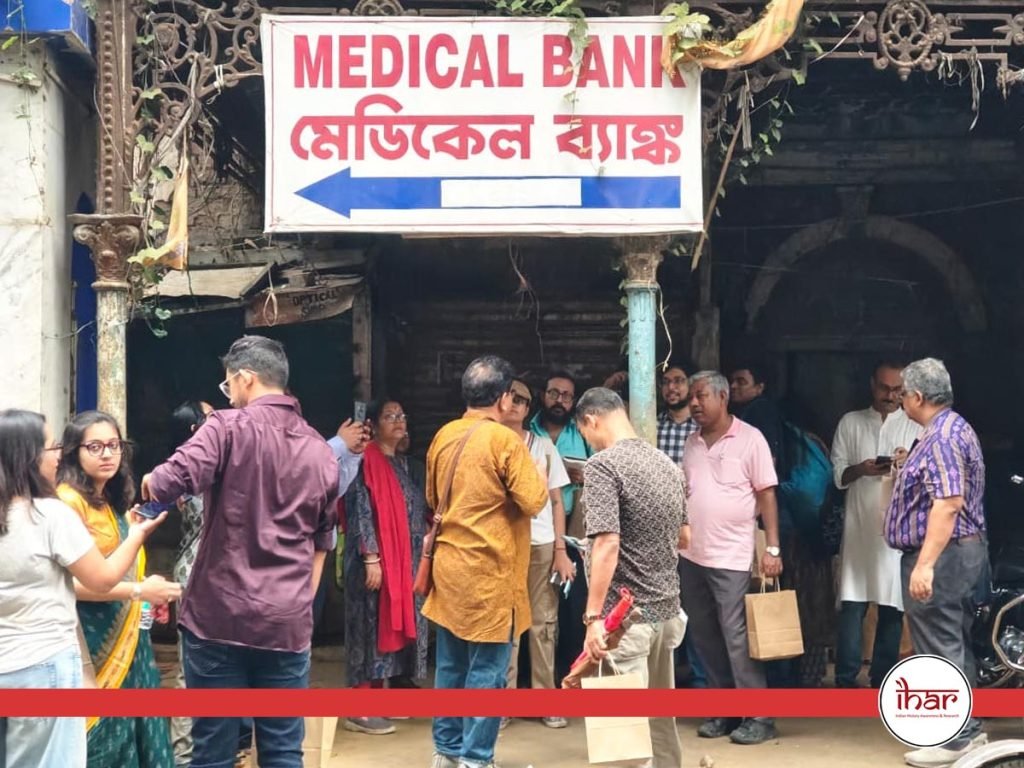
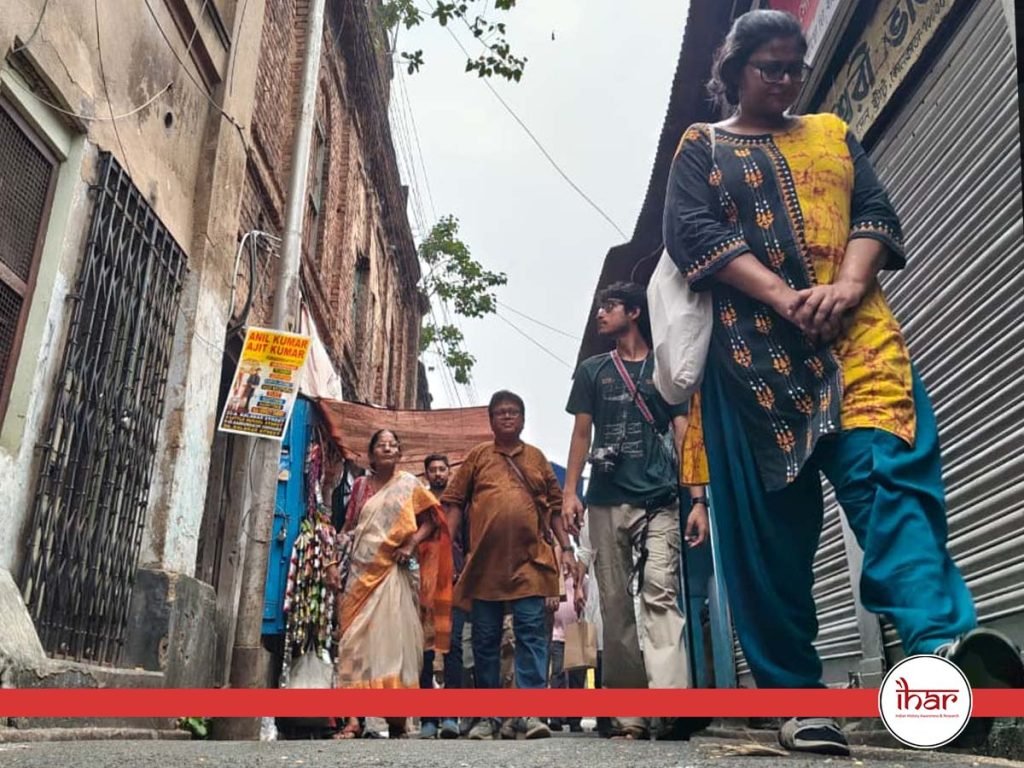





CARVING CONTINUITIES: THE LIVING HERITAGE OF SOAPSTONE ARTISANS

CONSTRUCTING GENDER IDENTITIES IN DEATH : RETHINKING MORTUARY ARCHAEOLOGY THROUGH THE EVIDENCE OF SINAULI

Rediscovering Sutanuti: IHAR WB CHAPTER’S Second Heritage Walk

Preserving Bengal’s Intellectual Legacy: IHAR West Bengal Chapter Undertakes Detailed Survey of Uttarpara Joykrishna Mukherjee Public Library

Reviving Bengal’s Intellectual Heritage: IHAR West Bengal Chapter Undertakes Detailed Survey of Chaitanya Library in Kolkata

Bharat Varsh – A Cradle of Civilzation – Panel Discussion

Bringing our Gods back home – A Conversation with Shri Vijay Kumar

Panel Discussion on Sati

Bengal’s Glorious and Diverse Heritage- Traditions and Festivals – Panel Discussion

IHAR – World Heritage Day – April 18th 2025 updates

Debugging the wrong historical narratives – Vedveery Arya – Exclusive podcast

The Untold History Of Ancient India – A Scientific Narration

Some new evidence in Veda Shakhas about their Epoch by Shri Mrugendra Vinod ji

West Bengal’s textbooks must reflect true heritage – Sahana Singh at webinar ‘Vision Bengal’

Bringing our Gods back home – A Conversation with Shri Vijay Kumar
Trending
-

 Events2 years ago
Events2 years agoBharat Varsh – A Cradle of Civilzation – Panel Discussion
-

 Videos2 years ago
Videos2 years agoBringing our Gods back home – A Conversation with Shri Vijay Kumar
-

 Videos11 years ago
Videos11 years agoPanel Discussion on Sati
-

 Events8 months ago
Events8 months agoBengal’s Glorious and Diverse Heritage- Traditions and Festivals – Panel Discussion
-

 Events7 months ago
Events7 months agoIHAR – World Heritage Day – April 18th 2025 updates





